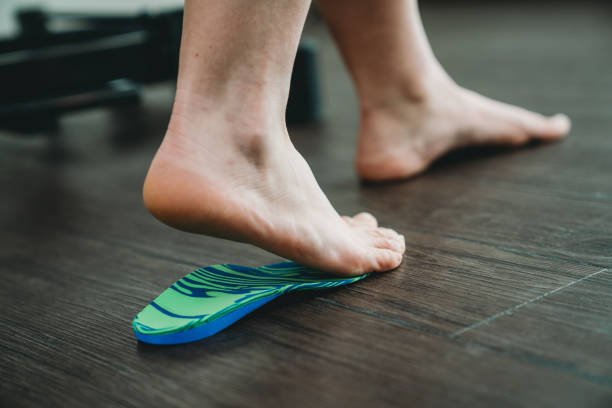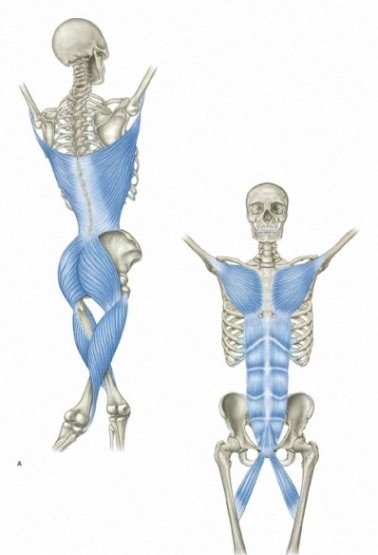Plantar Fasciitis Insoles vs Functional Patterns Training
Plantar fasciitis is a common condition characterized by pain in the heel or bottom of the foot. It results from inflammation of the plantar fascia, the thick tissue connecting your heel to your toes.
People suffering from plantar fasciitis often experience stabbing pain, particularly in the morning or after periods of rest. Many people use treatments like plantar fasciitis insoles, shoe inserts, or arch support. However, these solutions do not fix the main issue.
Traditional Interventions: Temporary Solutions
Conventional treatments focus on managing the symptoms of plantar fasciitis. Using products like orthopedic insoles for plantar fasciitis, or arch support for plantar fasciitis. These options can provide short-term relief by cushioning the foot and offering a sense of support.
However, using insoles for plantar fasciitis only treats the surface problem. However, this is a short term intervention that only offer a false sense of support. It does not address the root cause itself, which is poor movement patterns.
Movement Patterns; the Root Cause
Plantar fasciitis stems from inefficient movement, not just from an overworked foot. We believe that how well our bodies stand, walk, run, and throw affects our overall health. If we do these functions poorly, it can lead to problems like plantar fasciitis.
Anthropologists all agree that these functions are defining traits of human beings. The body evolved to perform these movements. However, modern lifestyles and bad movement habits have caused imbalances and problems.
One of the problems that we see arise from this modern day affliction is plantar fasciitis. Short sighted approaches follow. Interventions like orthotics for plantar fasciitis, arch support insoles, plantar inserts or foot insoles for plantar fasciitis have become popular approaches to deal with the issue.
But are they effective?
We do not believe they are effective; in fact, they tend to worsen the problem. Improving the functions of standing, walking, running and throwing addresses the underlying causes of plantar fasciitis. this is much more sustainable than temporary band aid approaches like plantar orthotics and foot inserts for plantar fasciitis
Functional Patterns focuses on fixing movement patterns instead of just hiding pain. It avoids temporary solutions like plantar orthotics or foot inserts for plantar fasciitis.
Anterior and posterior oblique slings.
Credit: Anatomy Trains
During movement we utilise muscles in kinetic chains (think muscles connecting to each other to perform movements). Two of these chains: The anterior oblique sling and the posterior oblique sling are pivotal in efficient movement.
The posterior oblique sling connects the lats to the opposing glutes, or, one side of the body to the other. The anterior oblique sling connects the pecs through the core to the opposite adductors. When these slings becomes dysfunctional we effectively lose the ability to rotate well. This leads to poor hip flexion and extension, along with limited upper body rotation.
The reason is that these two slings work with each other to create efficient rotation along with hip flexion and extension. When they become dysfunctional that is where problems like plantar fasciitis start arising. Which then leads to the incorrect treatment of orthotics, inserts
Plantar fasciitis insoles can't teach your foot how to support itself.
When you use interventions like plantar fasciitis insoles and fasciitis inserts you end up making the problem worse. Why? The foot is like a spring system, the end of the chain that connects all the way up to the opposite shoulder.
Without this natural spring the foot loses its ability to absorb shock and store energy. This is essential for movements like running and jumping.
With this in mind, it's clear that using plantar fasciitis insoles or orthotic insoles isn't a long term solution. What is a long term solution is learning to move well. Thankfully that is what we do best, teach our clients to improve their posture and movement. So if you are suffering from plantar fasciitis then the best thing you can do is to improve your movement patterns long term.
So what are the best plantar fasciitis insoles?
Your own body and understanding how it moves.
The question should be, what is missing in my body that requires me to use heel and arch support insoles? As mentioned above the loss of efficient movement and ability to connect your slings is what is missing.
You achieve the best arch support by learning to connect your body through "The FP First 4" — standing, walking, running, and throwing.
Orthotic Insoles vs Functional Patterns Training
The difference between arch support insoles for plantar fasciitis and Functional Patterns training lies in their approaches. Orthotic insoles provide external support but take away your foots ability to support itself. They do not address the body’s dysfunctional movement patterns and the causes of your foot issues. Instead, they merely compensate for poor mechanics, which allows the underlying problem to persist and often worsen over time.
Functional Patterns training does the opposite. It aims to restore proper function by connecting the body through the movements that we do the most (The FP First 4). The blueprint is there and our goal is to restore ourselves to this blueprint that evolved over millions of years.
Functional Patterns training focuses on making it a long term solution for addressing the root cause of plantar fasciitis. By improving the body’s natural movement we can alleviate problems like plantar fasciitis and prevent them from returning.
Functional Patterns results
To Conclude
While it's true that arch support insoles, plantar orthotics, and shoe inserts for plantar fasciitis may provide immediate comfort. This is only short lived because it fails to address the root cause of Plantar fasciitis. Which is your ability to move in accordance to your blueprint.
To achieve long term relief, it is essential to tackle your underlying dysfunctions. You do this by correcting your fundamental movements standing, walking, running, and throwing.
Functional Patterns aims to restore function by efficiently connecting the body through the FP First 4.
This approach targets the root cause of plantar fasciitis and promotes lasting recovery. Rather than relying on external supports like plantar fascia orthotics, which merely mask symptoms.





